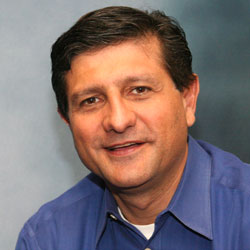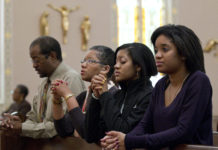 Recently I was invited to attend the Phoenix VA Health Care System Arts Festival to honor and display the artwork of veterans.
Recently I was invited to attend the Phoenix VA Health Care System Arts Festival to honor and display the artwork of veterans.
Since so many veterans benefit from VA recreational therapy activities like painting, pottery making, leather craft, creative writing and dance, the VA decided to shine a light on some of those creative talents with an arts festival called “Put Your Heart into Art.”
The art was pretty amazing. The vets were even more compelling. What it taught me about people, pain, redemption, love and our ultimate purpose was utterly amazing.
The first thing it made me realize is that we must learn to see our military not only as soldiers, but as human beings who have survived what is arguably the most horrible, most challenging of human experiences — war.
But what also struck me was the uncanny human transformation that occurs in those vets when they funnel their energy into creating something.
Case in point, Jay Gustafson was just barely a man — only 18 — when he was whisked away to swift boat duty in Vietnam. A few months later he was shooting at anything that moved.
“I saw plenty of action,” recalls Jay. “I would rather not discuss it.”
The experience took an obvious toll on him emotionally, as it would anyone. But he refused to let it stop him from leading a meaningful and rewarding life. He came home four years later to be a carpenter, a husband and a father to four children.
Creating something special
But like so many who are tapped to defend their nation, the end of the war was just the beginning of his battle. Those memories he would rather not discuss and undoubtedly wishes he never had aren’t easy to keep at bay. So discovering the intricate art of leatherwork was a miracle for him.
“It takes total concentration,” explains Jay. “And that keeps me from thinking about other things.”
But a little prodding reveals what might be the deeper medicinal value of the arts program for Jay and others.
He recently spent almost four months working day and night on an exquisitely ornate saddle for his equestrian daughter. And the only thing more beautiful than the saddle was the look on his face when he talked about making it for her.
“It gives a lot of meaning to it when you make something like that and you know how much she appreciates it,” explained Jay. “You put a lot into it, and you know that nobody else can do it, and how much it means to her.”
Jay wasn’t just making a saddle but creating something special for someone, and it gave him great pleasure and purpose to do so.
Maybe that’s what God meant when He said we were created in His image; we were given the ability to create something good for others. And just as God created the world for us because He loved us, and it gave Him pleasure to do so, so might we gain pleasure by creating for others.
Arguably the most difficult thing we can ever subject a human being to is the act of war. But if we can learn through these soldiers that even the worst of human experiences can be counteracted by that impulse and ability to create in many different ways beyond the world of art, then maybe there is some insight we can all use in our own battles to turn disappointment and disaster into love.
Then maybe we all can take a very important step toward being a little more like our Creator wants us to be—and creating a life and a world a little more like He would like us to.
If these soldiers can teach us that, then they will truly be defending our spiritual and psychological lives.




![[VIDEO] Make Sunday feel like Sunday again](https://www.catholicsun.org/wp-content/uploads/2021/04/2021-YOUTUBE-BISHOP-MESSAGE-THUMBNAIL-ENGLISH-218x150.png)

